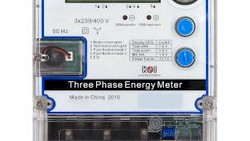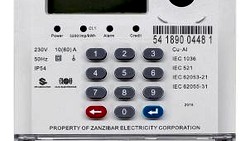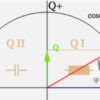Resonance is a phenomenon that can occur in AC power grids, leading to potentially detrimental effects on the stability and performance of the grid. Understanding the causes of resonance, its impact on consumer electronics, and the strategies available to grid operators for identification and resolution is crucial to ensure a reliable and efficient power supply. This article aims to provide an informative overview of resonance in AC power grids.
Causes of Resonance in AC Power Grids
Resonance in AC power grids can be attributed to the interaction between the inductive and capacitive components present in the system. The primary causes include:
- Capacitor and Inductor Interaction
The presence of capacitors and inductors in the grid, such as power factor correction capacitors and long transmission lines, can create a resonance condition. This occurs when the reactive power supplied by capacitors and the reactive power absorbed by inductors become equal and cancel each other out, resulting in resonant conditions. - Harmonic Distortion
Nonlinear loads, such as power electronic devices, can introduce harmonics into the power system. These harmonics can interact with the system's inherent capacitance and inductance, leading to resonance issues. - Inductive loads
Large inductive loads such as motors or transformers can create oscillations in the grid by storing energy magnetically and releasing it back into the system at a later time. - Parallel Resonance
Parallel resonance occurs when the inductive and capacitive components form parallel paths, resulting in a resonant circuit. This can arise due to the presence of capacitors, transformers, or long transmission lines. When there are multiple parallel lines carrying the same frequency, they can interact with each other and cause resonances if their lengths are nearly equal or have simple ratios (such as 2:1 or 3:1). - Stray capacitance
Electric power systems contain significant amounts of stray capacitance from insulation and grounding that may couple different parts of the grid together. This can lead to resonant behaviour under certain conditions. - Frequency regulation issues
If the frequency of the grid changes rapidly and is not properly stabilized, it can excite resonances within the system. This requires active management through load shedding, increasing/decreasing generator output, etc., to maintain stability. - Faults in the network
Disturbances on the grid caused by faults or interruptions can trigger resonances depending on the location, magnitude, and duration of those faults. - Series Resonance
Series resonance arises when inductive and capacitive components are connected in series, creating a resonant circuit. This can occur with the presence of long transmission lines, cables, or transformers.
New upcoming challenges
The following factors also contribute to resonance when considering renewables and distributed energy resources:
- Modularity and modelling difficulties
Due to their high degree of modularity and variability, analysing and understanding the impacts of different combinations of distributed energy resources on overall grid behaviour is often challenging. The difficulty lies in accurately estimating the dynamic responses of various configurations, especially when scaling up to utility-size microgrid applications. - Unpredictable response behaviours
Renewables, such as PV arrays or wind turbines, may exhibit unanticipated responses under particular operating scenarios that can lead to unexpected oscillations and instabilities in the grid. This arises due to variations in solar irradiance levels, wind speed patterns, or temperature-sensitive component properties, which change over time and differ between sites. - Control algorithm refinement requirements
Introducing controllers capable of tracking desired operating modes while avoiding unwanted resonant phenomena demands sophisticated tuning techniques tailored specifically for renewable resource contexts. Ongoing algorithm adjustments based on field-testing and simulation refinements will improve performance. - Impactful interactions
When combined with conventional generators, renewable power sources frequently create amplified interaction forces across different frequency domains, enhancing the risk of resonances or introducing entirely new types of disturbances. - Nonlinear coupling influences
Power electronics interfaces used with many distributed energy resources often give rise to nonlinear couplings, which can exacerbate or introduce novel resonance situations when integrated into the main grid structure. Adequate circuit-level model enhancements and experimental validation can help characterize and minimize these effects.
Impact on the Consumer
Resonance in AC power grids can have adverse effects on consumer electronics connected to the grid. Some of the impacts include:
- Voltage Fluctuations
Resonance can cause voltage fluctuations, leading to unstable and unreliable power supply to consumer electronics. These voltage fluctuations can result in malfunctioning or damage to sensitive electronic devices.
- Overheating and Component Stress
In the presence of resonant conditions, electronic components can experience increased current levels, leading to overheating and stress on the components. This can significantly reduce the lifespan of electronic devices.
- Equipment Failure
Resonance-induced voltage surges and transients can cause sudden equipment failures, resulting in financial losses for consumers.

(symbol Image, Credit CLOU)
Identification and Solutions for Grid Operators
Grid operators play a crucial role in identifying and mitigating resonance issues to maintain a stable and efficient power grid. Some strategies for identification and resolution include:
- Power Quality Monitoring
Grid operators can employ advanced power quality monitoring systems to identify voltage variations, harmonics, and resonant conditions. These systems can provide real-time data on power quality parameters, enabling operators to detect and analyse resonance issues.
- System Modelling and Analysis
Grid operators can use computer-based modelling and simulation tools to analyse the grid's characteristics, including capacitance, inductance, and transmission line lengths. By studying the system's resonance characteristics, operators can anticipate and prevent resonance issues.
- Reactive Power Compensation
Grid operators can employ reactive power compensation techniques to control voltage and power factor. By carefully managing reactive power flow, operators can minimize resonance conditions in the grid.
- Filter Installation
The installation of harmonic filters at critical points in the grid can help mitigate resonance issues caused by harmonic distortion. These filters are designed to suppress specific harmonic frequencies, reducing the chances of resonance.
- Network Reinforcement
Grid operators may need to reinforce the grid infrastructure by upgrading transformers, transmission lines, or capacitors. This approach aims to modify the system's characteristics to minimize the potential for resonance.
- Coordination with Industry Standards
Grid operators should adhere to relevant industry standards and guidelines for power grid design, operation, and equipment installation. Compliance with standards helps prevent resonance issues and ensures a reliable power supply.
Takeaway
Resonance in AC power grids can have significant implications for the stability of the grid and the performance of consumer electronics. Understanding the causes of resonance, its impact on consumer electronics, and the strategies available to grid operators for identification and resolution is essential. By implementing proactive measures such as power quality monitoring, system analysis, reactive power compensation, filter installation, network reinforcement, and adherence to industry standards, grid operators can effectively manage and mitigate resonance issues, ensuring a stable and efficient power supply for consumers.
Remember, a robust and resilient power grid is essential for meeting the ever-increasing demands of modern society while maintaining the integrity of electronic devices and ensuring a reliable power supply. If you have any inquiries regarding how our energy meters and system solutions can enhance grid stability, please don't hesitate to reach out to us. Our dedicated engineering team is ready to collaborate with you to identify the best possible solution for your needs.
Editor's note: This article was originally published in July 2023 and has been updated for comprehensiveness.





All comments are moderated before being published. Inappropriate or off-topic comments may not be approved.